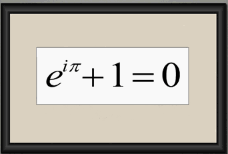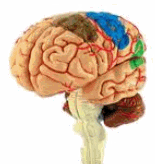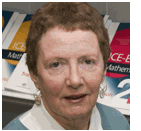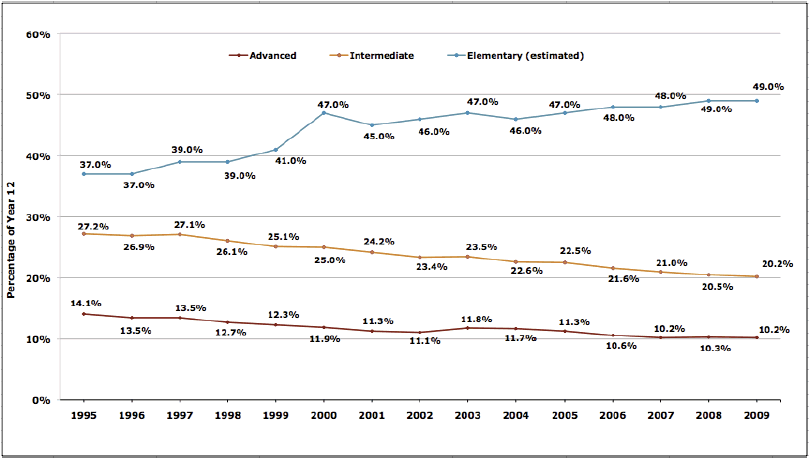

|
Editorial
- 02 October 2013 |
|
|
Jan Thomas Issues a Plea for Maths and Stats |
 |
 Jan Thomas is a Senior Fellow of The
University of Melbourne. As a member of the Australian Academy of Science's National Committee
for Mathematical Sciences, she was involved in the 1996 ARC funded Strategic
Review of advanced mathematical sciences and as a member of the Federation of
Australian Scientific and Technological Societies (FASTS) Executive, she
authored an Occasional Paper on the state of mathematical sciences and its
subsequent update; she was also a member of the Working Party for the 2006 ARC
funded Review of Mathematical Sciences.
Jan Thomas is a Senior Fellow of The
University of Melbourne. As a member of the Australian Academy of Science's National Committee
for Mathematical Sciences, she was involved in the 1996 ARC funded Strategic
Review of advanced mathematical sciences and as a member of the Federation of
Australian Scientific and Technological Societies (FASTS) Executive, she
authored an Occasional Paper on the state of mathematical sciences and its
subsequent update; she was also a member of the Working Party for the 2006 ARC
funded Review of Mathematical Sciences.
Here we reprint as our October editorial her opinion contribution
of May 5, 2011 which is based on a submission to the
Federal Government's Review of Higher Education Base Funding on March 31, 2011. A copy of the full
submission is available
Here![]() .
.
With the installation of the the Coalition government led by Tony Abbott on September 18, 2013 it may be an opportunity to seize the day as Harvie Krumpet might say, on the off chance that governmental-policy clay hasn't fully solidified as regards support for the nation's STEM.
______________________________________
Getting the funding for mathematics and statistics right is an equity and social inclusion issue. The upcoming Review of Higher Education Basic Funding must produce an outcome that ensures that graduates have the mathematical and statistical tools to fully engage in society whatever their discipline. A funding model is needed that provides adequate funding for the teaching of multiple courses for diverse needs and interests. Students who graduate without mathematical and statistical skills equivalent to what is expected from similar degrees internationally, and excellent communication skills, are disadvantaged in the workplace both nationally and internationally.
Since 1995 the mathematical background of many of the cohort entering universities has changed dramatically. This is shown in the following diagram:

As the percentage of students gaining university places grew, the percentage with intermediate or advanced level mathematics fell. Increasingly the students entering university have needed specific mathematics and statistics courses that ensure that they have the mathematical knowledge to understand their subjects. It is not just about ‘passing’ – this is concerned with becoming a competent professional be it in engineering, primary teaching, sociology or agriculture. But the needs of these groups of students are vastly different. At the same time the mathematically talented need stimulating and challenging courses. Providing for these students in years 2 and 3 of their studies can be particularly challenging for small departments.
As faculties sought to maintain income, service teaching of mathematics and statistics was affected in several ways especially by being taught within the faculty concerned. This has several effects. One is that, over time, the courses often become fossilised and no longer reflect modern mathematical techniques within the discipline. The drift of service teaching from mathematics and statistics departments has a profound effect on those departments. And it is not supported in other nations.
The 2007 federal budget -- the last of the Howard Coalition government -- saw a very substantial increase for mathematics and statistics. However, as the history of funding for the teaching of mathematics and statistics reveals, it is not sufficient to provide universities with the funding for specific disciplines unless there is a mechanism to ensure that is where the money is spent.
The Effect on University Mathematics Departments
At the time of the 1996 Review there was considerable concern about the lack of new academic positions being advertised. A particular aspect of this was that mathematics had traditionally encouraged its best students to complete their PhDs overseas and now it was becoming very difficult for them to come back. However, contraction of departments was not expected and many retirements were in the pipeline.
Furthermore, the funding to the universities that followed the 1996 election meant that what actually happened was that as positions became vacant they were not filled and mathematical sciences departments did contract. Not only were the best young people not coming back but now many of the best researchers were also leaving. The brain drain is documented in the FASTS Occasional paper and update12.
Compounded by a decline in the number of mathematically well-qualified students from Year 12 with the background for courses requiring considerable mathematics and a funding model that was inadequate, university mathematical sciences departments continued to contract.
In 2007 funding for the teaching of mathematics and statistics was considerably increased, but there was no requirement for universities to use it to improve the provision of mathematics and statistics courses. Only a few did and mathematics and statistics departments, with one or two exceptions, continued to decline.
The 2006 Review showed that the Go8 lost over 30% of their teaching and research staff in the period 1995-2005. While these universities have maintained viable departments the same cannot be said for the smaller, and especially the regional, universities. The result is seen the number of universities no longer offering majors in mathematics and the larger group that cannot offer a major in statistics.
The parlous state of mathematics in many of Australia’s universities is further demonstrated by the recent ERA exercise. To quote Professor Nalini Joshi, Chair of the Academy’s National Committee for the Mathematical Sciences:
Forty-one tertiary institutions submitted research outputs to be evaluated. Out of these, 17 did not receive an assessment in the mathematical sciences. This means that these 17 institutions did not have enough research publications in mathematical sciences in the six-year reference period to meet the ERA minimum threshold. What is this threshold? It is a minimum of 50 research outputs (or 30 outputs in the case of pure mathematics) in the reference period: 01 January 2003 – 31 December 2008.
To understand this a little more, consider a fictional mathematics department with ten research active staff members publishing one paper each per year in a mathematical journal. This department would have 60 research outputs over the reference period and so would receive an ERA assessment. The reality in Australia is that many tertiary institutions do not have such numbers of mathematically active staff.
Only 12 institutions received an assessment for statistics.
Teacher Supply
In secondary schools mathematics is the most widely reported area of shortfall quoted by principals.
The percentage of graduating secondary teachers qualified to teach mathematics is around 7%. The time in the school curriculum for mathematics is around 14%. This supply and demand mismatch has existed for over ten years. It is not surprising that the performance of Australia’s Year 8 students in TIMSS has gone from statistically above both the UK and USA in the mid-90s to statistically below both these countries.
The mathematics teacher problem is massive. New Year 7 mathematics teachers are likely to be young female biology graduates who gave up mathematics well before university. With no mathematics in their degrees they have not completed any courses in teaching mathematics.
The downward spiral emerges of too few mathematical sciences graduates leading to an inadequate supply of teachers, to school students not having a mathematics education that leads to participation in the more advanced Year 12 subjects etc
Currently thousands of young Australians are deprived of an adequate education in the mathematical sciences by virtue of an inadequate supply of properly qualified mathematics teachers in schools that is compounded by woefully under-resourced mathematics and statistics teaching in the universities.
Implications for the Current Review of Higher Education Basic Funding
The UK is the only English-speaking nation in recent times to make significant gains in students’ appreciation and participation in the mathematical sciences.
For the UK experience to be duplicated in Australia there would need to be very much greater presence of mathematical sciences in universities across Australia. This is because university mathematical sciences are already stretched to the limit with an increasingly use of casual staff and difficulties in finding appropriate part-time and casual staff. Majors need to be re-established or established in all universities to provide the opportunity for more students to consider this option. And improved staffing would enable more universities to be involved in providing appropriate courses for improving teachers’ discipline knowledge.
The most important lessons learnt from the experience of the mathematical sciences is that:
It is not enough for governments to fund teaching at a level seen as desirable for good teaching and learning outcomes in a discipline, if the money can then be diverted to other areas, and
That the shift of service teaching out of discipline departments weakens the discipline department and results in poor delivery of courses, if not initially, then over time.
Finally, there is the issue of re-invigorating teaching and learning in
disciplines of strategic national importance that have contracted (mathematical
sciences) or almost disappeared (geophysics, entomology, some languages etc).
The failure of government funding for teaching and learning in Australia to keep
pace with other nations means there is now a gap that is unlikely to be able to
be met completely for some years.
In the short term it would be sensible to look at something like the UK model of
identifying strategically important and vulnerable subjects for special
attention.
Australian higher education desperately needs some thinking ‘outside of the
square’ and an aggressive response to some of the problems now inherent in the
system that have the potential to have a serious long-term effect of innovation,
national and personal wealth, and particularly social equity.
______________________________________________________